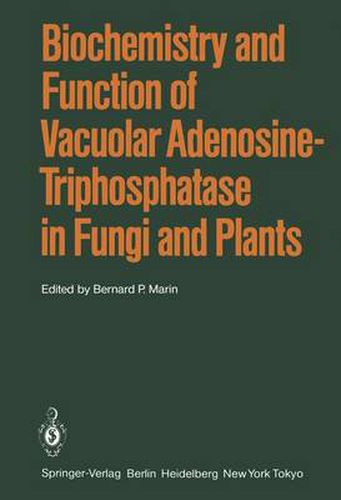Readings Newsletter
Become a Readings Member to make your shopping experience even easier.
Sign in or sign up for free!
You’re not far away from qualifying for FREE standard shipping within Australia
You’ve qualified for FREE standard shipping within Australia
The cart is loading…






This title is printed to order. This book may have been self-published. If so, we cannot guarantee the quality of the content. In the main most books will have gone through the editing process however some may not. We therefore suggest that you be aware of this before ordering this book. If in doubt check either the author or publisher’s details as we are unable to accept any returns unless they are faulty. Please contact us if you have any questions.
Early approaches towards an understanding of transport at the tonoplast of higher plant cells were based on the kinetics of radio-isotope uptake (Torii and Laties. 1966) and exchange (Pitman, 1963). A variety of other methods became available in due course (reviewed by Clarkson and Luttge, 1984). But even with the most modern developments, the function of. the tonoplast remained in the dark. On the basis of Hitchell’s chemiosmotic $heory (Hitchell, 1967), mechanisms of membrane-bound H -translocating ATPases and H -solute co-transport were conceived for the plasmalemma of fungi and plants, based on experiments with intact tissues, cells or protoplasts . With the onset of the era of membrane fractionation it seemed obvious that plasmalemma and tonoplast vlould cause the greatest problems due to the apparent lack of intrinsic markers. Again the situation for the plasmalemma appeared to be favorable; the periodic-phosphotungstic-acid reagent was considered as a specific stain. There was also the opportunity to bind externally applied markers to the plasmalemma prior to cell homogenization. Vacuoles were initially considered as compartments for intracellular excretion or at best as storage compart- ments, but were later understood to have important dynamic functions in cell physiology as a lytic compart- ment comparable to animal lysosomes (Hatile, 1966). The dynamics of molecular functions of the tonoplast itself remained obscure, however, with one exception. Hotivated by the search for a better understanding of latex production by the rubber tree Hevea brasiliensis Hull. -Arg.
$9.00 standard shipping within Australia
FREE standard shipping within Australia for orders over $100.00
Express & International shipping calculated at checkout
This title is printed to order. This book may have been self-published. If so, we cannot guarantee the quality of the content. In the main most books will have gone through the editing process however some may not. We therefore suggest that you be aware of this before ordering this book. If in doubt check either the author or publisher’s details as we are unable to accept any returns unless they are faulty. Please contact us if you have any questions.
Early approaches towards an understanding of transport at the tonoplast of higher plant cells were based on the kinetics of radio-isotope uptake (Torii and Laties. 1966) and exchange (Pitman, 1963). A variety of other methods became available in due course (reviewed by Clarkson and Luttge, 1984). But even with the most modern developments, the function of. the tonoplast remained in the dark. On the basis of Hitchell’s chemiosmotic $heory (Hitchell, 1967), mechanisms of membrane-bound H -translocating ATPases and H -solute co-transport were conceived for the plasmalemma of fungi and plants, based on experiments with intact tissues, cells or protoplasts . With the onset of the era of membrane fractionation it seemed obvious that plasmalemma and tonoplast vlould cause the greatest problems due to the apparent lack of intrinsic markers. Again the situation for the plasmalemma appeared to be favorable; the periodic-phosphotungstic-acid reagent was considered as a specific stain. There was also the opportunity to bind externally applied markers to the plasmalemma prior to cell homogenization. Vacuoles were initially considered as compartments for intracellular excretion or at best as storage compart- ments, but were later understood to have important dynamic functions in cell physiology as a lytic compart- ment comparable to animal lysosomes (Hatile, 1966). The dynamics of molecular functions of the tonoplast itself remained obscure, however, with one exception. Hotivated by the search for a better understanding of latex production by the rubber tree Hevea brasiliensis Hull. -Arg.